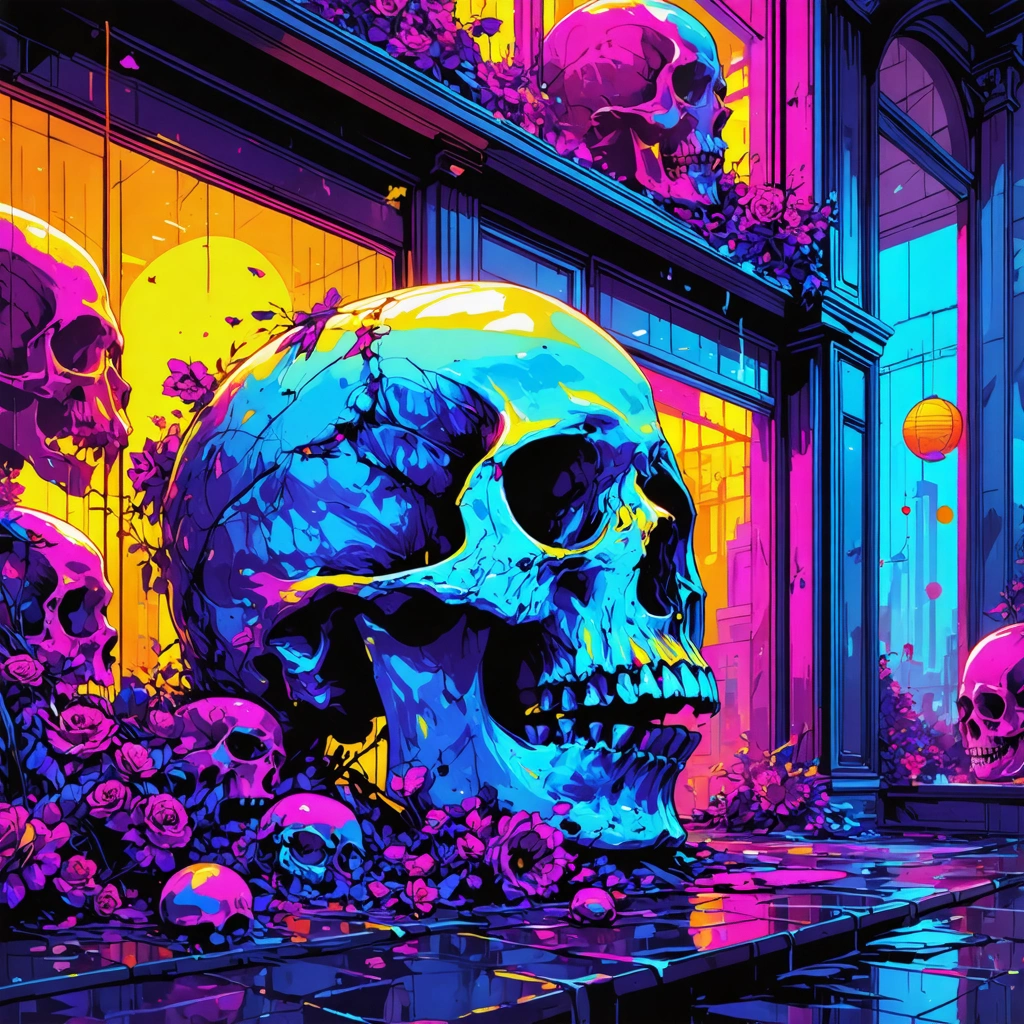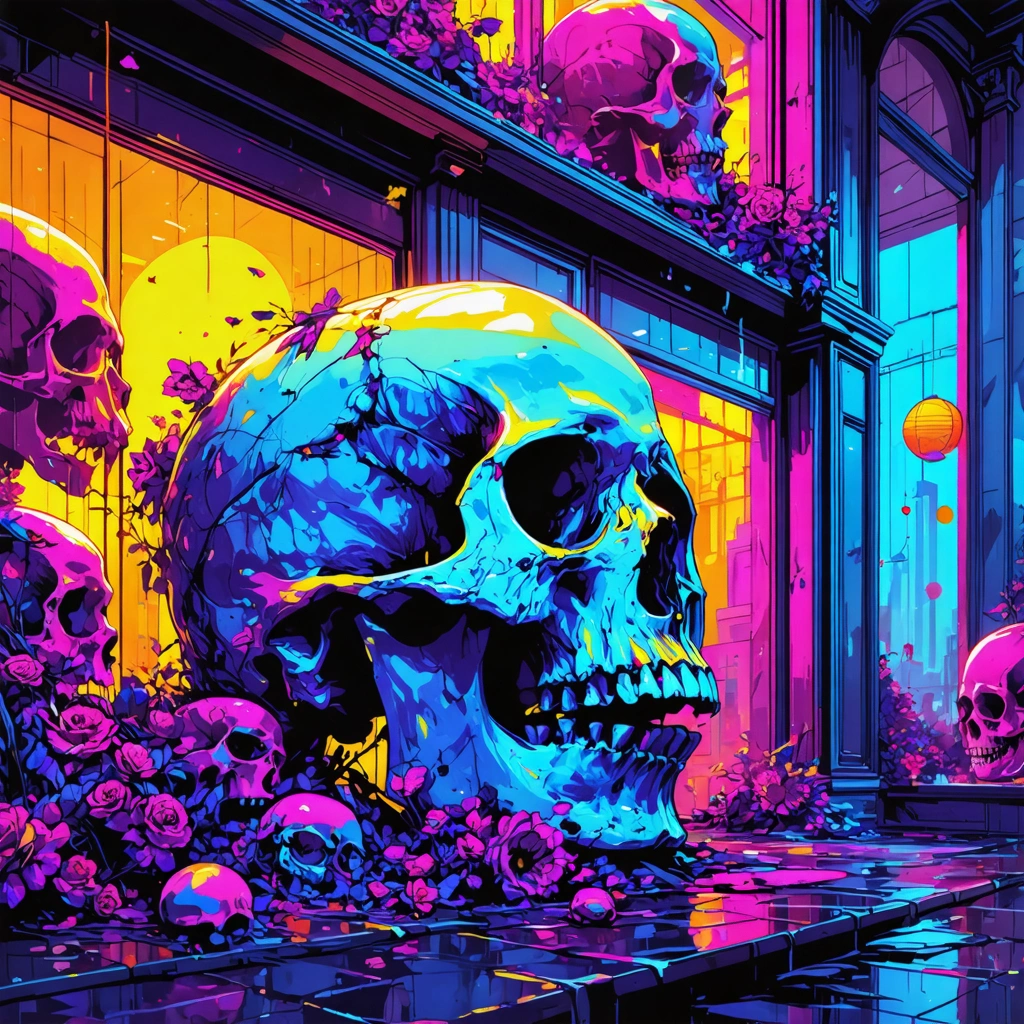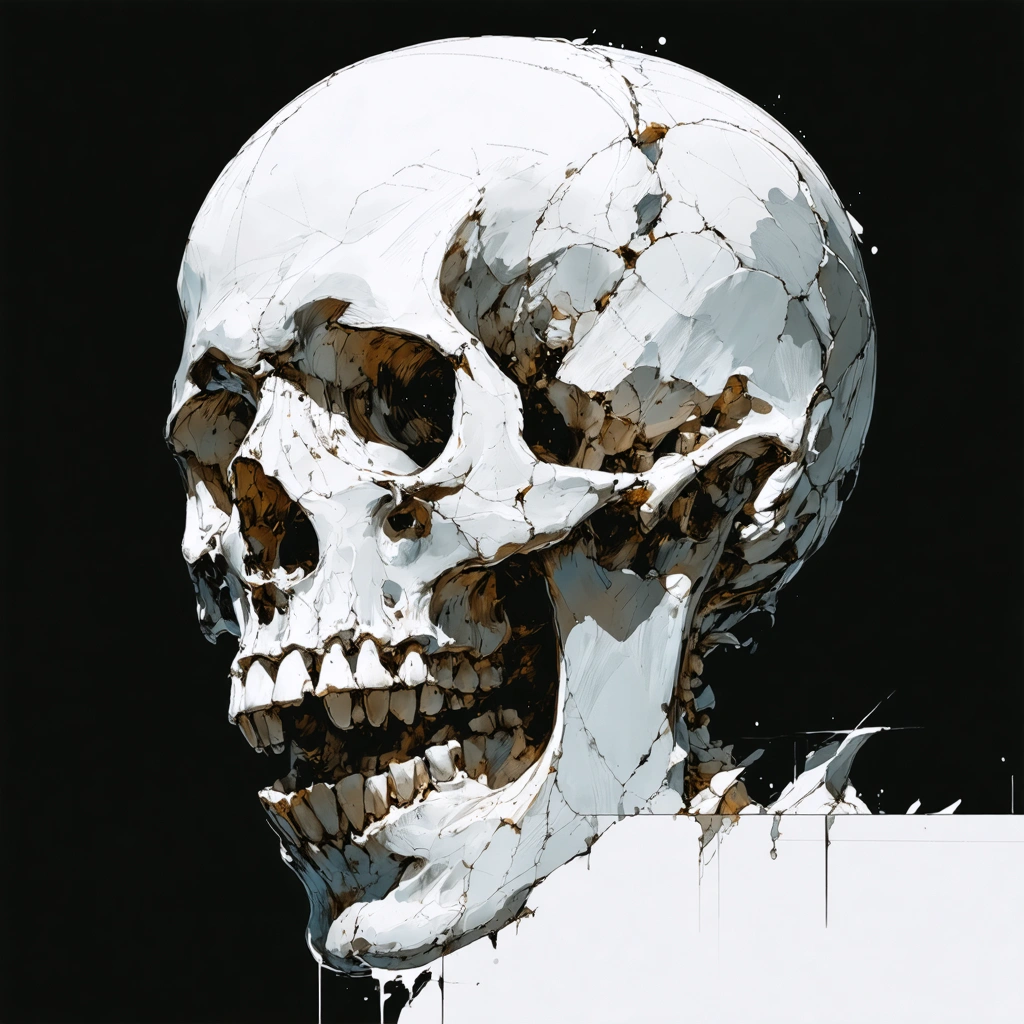
Why Are Skulls So Magnetic in Tattoos and Fashion?
Have you ever paused to wonder why skull drawings, skull masks, and skeleton art show up everywhere—from bold tattoo sleeves to runway fashion and streetwear alike? It’s like these images tap into something primal, edgy, and undeniably cool. But beneath that instantly recognizable visual lies a rich tapestry of meanings and cultural significance that goes far beyond the surface. For those drawn to the daring aesthetic of skull art, understanding what these symbols really stand for can unlock a deeper appreciation for their boldness and timeless appeal.
Skulls have long been a source of fascination, evoking feelings that range from rebellion to reflection, mortality to mystique. Yet, despite their popularity, many people still see skull art as merely a “dark” or “goth” motif without grasping its multifaceted symbolism. This leaves artists, collectors, and fashion aficionados craving a clearer narrative that connects the dots between aesthetic choice and cultural weight.
The Allure of the Skull: More Than Just a Design
First, let’s zoom in on the core of this phenomenon. Why do skull drawings and skeleton art resonate so powerfully across generations and cultures? Imagine walking into a tattoo parlor or browsing a boutique where skull masks and related imagery reign supreme. There’s a magnetic pull that draws your eye—part mystery, part raw honesty about life and death. The skull’s stark, stripped-down form is the ultimate equalizer, a reminder that beneath all our layers, we share the same fragile human frame.
This simple yet striking image serves as a canvas for stories of transformation, resilience, and even humor. For example, consider the Day of the Dead skull masks from Mexican culture, which celebrate ancestors with vibrant colors and joyful designs rather than somber tones. In a tattoo, a skull might symbolize a personal triumph over hardship or a fearless embrace of life’s fleeting nature.
Yet, the widespread use of skull imagery also raises questions: How can such a potent symbol be simultaneously edgy, fashionable, and meaningful? Why does it maintain its relevance in tattoo culture and high fashion, where trends are ever-changing? These questions reveal a subtle tension between the skull’s raw symbolism and its polished presentation in contemporary design.
From Dark to Daring: How Skull Art Shapes Bold Aesthetics
Here’s where things get really interesting. The skull drawing is not just about shock value or rebellion; it’s a versatile symbol that artists and designers manipulate to express identity, challenge norms, and even celebrate life itself. The edgy appeal lies in its ability to provoke thought and spark conversations, whether inked on skin or stitched into fabric.
For tattoo enthusiasts, skull art offers a powerful way to wear one’s story visibly. Each skeleton art piece can be customized to reflect personal beliefs, cultural heritage, or artistic preferences. Fashion designers, on the other hand, remix skull motifs to push boundaries and create statement pieces that defy conventional elegance. From leather jackets emblazoned with skull drawings to skull masks used in avant-garde runway shows, this aesthetic fuses grit with glamour.
Moreover, skull art serves as a bridge between tradition and innovation. It honors ancient symbolism while inviting fresh interpretations, making it a compelling choice for anyone who wants to stand out without losing connection to deeper meaning. In essence, the skull is a visual metaphor for embracing life’s complexities—its beauty and its brevity—head on.
What You’ll Discover in This Article
Ready to dive deeper? This article will unravel the layers behind skull art’s edgy design and symbolism, focusing on how skull drawings, skull masks, and skeleton art fuel bold aesthetics in tattoos and fashion. We’ll explore:
- The historical roots and cultural significance of skull imagery around the world
- Why skull art remains a staple in tattoo culture and how it empowers self-expression
- The role of skull motifs in fashion—how designers incorporate these symbols to create daring, trendsetting looks
- Interpretations of skull art in various subcultures and what it means for identity and community
Whether you’re a tattoo artist, fashion designer, art lover, or just someone curious about the magnetic pull of skull art, this journey will reveal why these stark images continue to captivate and inspire. Let’s strip away the mystery and celebrate the skull’s bold statement in contemporary aesthetics.

Skull Art: Edgy Design Symbolism in Tattoos and Fashion
What is the symbolic meaning behind skull art and skull drawings?
Skull art carries rich symbolism that has evolved across cultures and time periods. At its core, a skull symbolizes mortality and the transient nature of life, reminding viewers of death's inevitability. However, in modern edgy design—especially in tattoos and fashion—it often embodies themes of rebellion, strength, and transformation.
Skull drawings, for instance, are not merely representations of death but also act as powerful statements of individuality, courage, and defiance against societal norms. This dual symbolism resonates strongly in subcultures such as punk, goth, and biker communities where skull imagery serves as a badge of identity.
Additionally, skull art can represent protection and ward off evil spirits, a belief rooted in ancient traditions. The use of skull masks in certain cultural rituals further amplifies this spiritual and protective symbolism.
How do skull drawings influence bold aesthetics in tattoos and fashion?
Skull drawings have become a cornerstone in creating bold aesthetics due to their striking visual impact and versatile symbolism. In tattoos, skull designs range from realistic anatomical renderings to stylized, abstract forms, allowing wearers to express nuanced meanings—from honoring lost loved ones to showcasing personal resilience.
Fashion designers incorporate skull art to evoke an edgy, avant-garde vibe that challenges mainstream beauty standards. For example, iconic brands like Alexander McQueen have popularized skeleton art motifs on clothing and accessories, blending macabre elements with high fashion.
The use of skull masks and skull imagery in streetwear and runway collections often signals a fusion of art and attitude, making these designs instantly recognizable and culturally relevant. This trend is supported by market data showing that apparel with skull motifs consistently performs well in alternative fashion segments, driven by younger demographics seeking unique self-expression.
What are the different styles and techniques used in creating skull art?
Skull art spans a wide variety of artistic styles and techniques, each bringing a different emotional and visual effect:
- Realistic Skull Drawings: Detailed anatomical sketches emphasizing bone structure and texture, often used in medical illustration or hyper-realistic tattoos.
- Day of the Dead (Día de los Muertos) Skulls: Colorful, ornate skulls decorated with floral and geometric patterns, celebrating life and honoring ancestors.
- Abstract and Geometric Skeleton Art: Incorporates shapes, lines, and fragmentation to create modern, minimalist interpretations.
- Graffiti and Street Art Skulls: Bold, expressive designs using spray paint and stencils to convey social commentary or personal identity.
Artists often combine these styles with other media such as digital art, mixed media, or 3D modeling to push the boundaries of traditional skull imagery.
Why are skull masks significant in cultural and contemporary art contexts?
Skull masks hold profound cultural significance across many societies. Traditionally, they are worn during ceremonies to communicate with ancestors, invoke protection, or symbolize death and rebirth. In Mexico’s Día de los Muertos, for example, skull masks and face paint celebrate the cyclical nature of life and the enduring bond with the deceased.
In contemporary art and fashion, skull masks have transcended ritualistic use to become powerful visual statements. They are used in performances, fashion shows, and festivals to evoke mystery, anonymity, and transformation. This dual role highlights both the mask’s ancient roots and its modern reinterpretation as an icon of edgy style.
How can incorporating skeleton art enhance personal style or artistic projects?
Incorporating skeleton art—whether through skull drawings, masks, or skeletal motifs—adds a distinctive edge that can elevate personal style or creative works. Here’s how:
- Expressing Individuality: Skeleton art often symbolizes nonconformity and personal strength, making it ideal for those wanting to stand out.
- Adding Depth and Meaning: The layered symbolism can convey complex messages about life, death, and transformation, enriching narratives in visual art or fashion.
- Versatility: Skeleton motifs can be adapted to suit various aesthetics—from gothic to futuristic—allowing creative flexibility.
- Creating Visual Impact: The stark contrast and intricate details of skull drawings or skeletal designs naturally draw attention, making them focal points in any composition.
For artists and designers, experimenting with different materials and techniques—such as engraving, embroidery, or digital animation—can further enhance the expressive power of skeleton art.
What are some notable examples of skull art in popular culture?
Skull art has permeated popular culture in many memorable ways:
- Alexander McQueen’s Skull Scarves and Jewelry: These iconic accessories have become synonymous with edgy luxury fashion.
- The Punisher Logo: This skull emblem is widely recognized in comics and television as a symbol of vigilantism and justice.
- Heavy Metal and Rock Music Imagery: Bands like Metallica and Guns N’ Roses frequently use skull motifs in album art and merchandise to convey power and rebellion.
- Street Art by Artists like Banksy: Incorporation of skull and skeleton themes to comment on societal issues and mortality.
These examples demonstrate the wide-reaching influence and enduring appeal of skull art across various creative domains.



